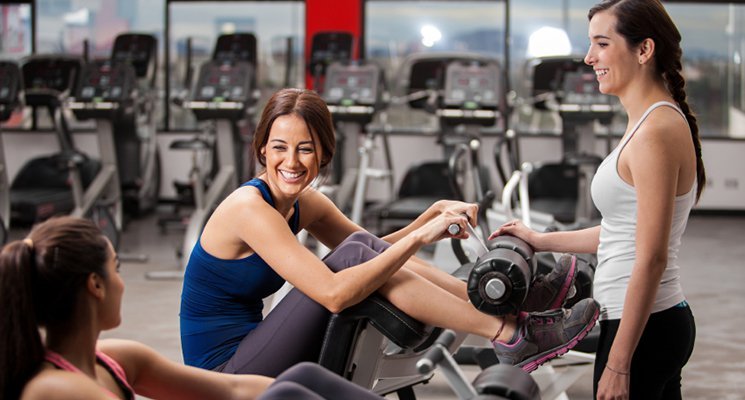So, here’s a question: How many of your facility’s offerings have to do with helping your clients strengthen their core? If you answered, “A lot,” that’s a good start, or so would say some industry leaders who believe focusing on the core is the best possible strategy right now — for both fitness businesses and clients. If you answered, “All of them,” you’re at the forefront of a new trend: facilities that make core-training the foundation of their entire business model. A recent, fascinating article on the IHRSA website takes a close look at the growing trend and at the expansion of core-training offerings at fitness facilities around the country.
Mike Z. Robinson, IDEA’s 2015 Personal Trainer of the Year and owner of MZR Fitness, a training studio in San Luis Obispo, California, told IHRSA he’s “seen a definite increase in the number of boutique studios that feature core-based movements — facilities that focus, for example, on Pilates and barre. Their main selling point is a workout constructed around the core. At the same time, traditional gyms are offering more core-centric classes, because consumers have become aware of the benefits. Program schedules are reflecting the trend, the demand.”
Some trainers go so far as to say the trend is taking over. Amy Dixon, the national creative manager for group fitness for Equinox Fitness and a master trainer for BOSU and Shockwave, told IHRSA, “For a while, we saw a push toward the high-intensity end of the spectrum. Today, I believe, the pendulum is swinging back…. We’re seeing clubs integrate core into all their classes.” In other words, the focus now is turning toward exercises necessary for sharpening the core and away from the kinds of high-intensity activities that stress the importance of raising, and then resting, the heart rate.
Why the renewed interest in core-based exercising? Dixon, Robinson, and other trainers argue that a strong core is the foundation of good fitness. “When you help clients improve their core strength,” said Kim Ingleby, founder of the Energised Performance studio in Bristol, England, “you’re making it possible for them to progress to more complex exercises while simultaneously reducing the probability of injury.” A strong core, therefore, lowers the chances of sprains and other pains, and increases the chances of improved results for members. At the same time, it reduces liability concerns for clubs, because clients are progressing through strength-training safely and appropriately.
How do you jump on the trend? It’s easy to incorporate core basics into an existing program. Think beyond crunches, which are effective but not as effective as other moves; it’s better to focus on motions that truly integrate the core, such as squats, push-ups, or lateral lunges. As Dixon puts it, “Multidimensional movement is the key.” Think about how you might pull such movements into, say, classes for skiing or triathlons. Also, keep in mind that manufacturers are coming out with more and more core-focused pieces, such as BOSU, CoreTex, and Core Stix. Other equipment mentioned by some of the trainers IHRSA spoke with include TPX, ViPR, and Life Fitness’s SYNRGY360. Also, consider designing a core-for-beginners class, one aimed at a population that never has thought much about its core, let alone exercised it before. “Everyone, no matter their age or their initial condition, needs core work,” Dixon pointed out, “and, with the right training, they will improve.” But they need to be given the chance to get started.
Wherever you boost up your core offerings, keep in mind that it’s crucial to let your clients know, first of all, that you consider core-work vital, and second of all, that you’re creating more possibilities for clients to focus on the core. Use social media, email blasts, face-to-face sales, and attractive flyers to get the word out. And make sure you emphasize the possibility for fun when it comes to core-training — and the great potential benefits.
